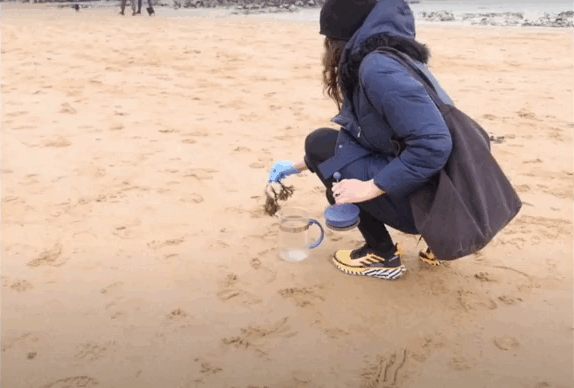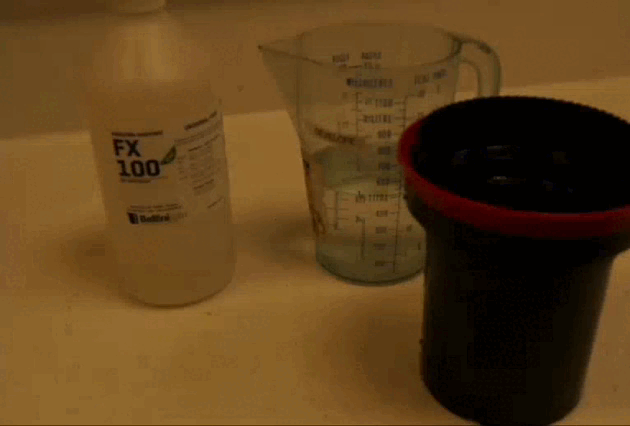Developing and Printing with the Sea
- Alternative Processes

- May 3, 2022
- 5 min read
Updated: May 29, 2022
With Melanie King

Melanie King is a working class artist and curator, originally from Manchester, UK. Melanie is now based in Ramsgate, Kent, UK. Melanie's work has a specific focus on astronomy, analogue photography and materiality. She is co-Director of super/collider, Lumen Studios and founder of the London Alternative Photography Collective, as well as a PhD Candidate at the Royal College of Art (2015-2022). Melanie regularly presents her work at conferences, universities and galleries and organises participatory workshops in relation to her practice at notable institutions. She is currently Artist In Residence at the School of Metallurgy and Materials at The University of Birmingham and Spacer in Ramsgate.
The use of more sustainable materials in photography for your project Submerged Landscapes, is in response to the impact rising sea levels will have on UK shorelines due to Climate Change. Could you tell us a bit more about the research and work you are making for Submerged Landscapes?
Submerged Landscapes is a project originally commissioned by Mural focused on documenting the areas around Thanet which are likely to be submerged before the year 2030. I live in Ramsgate on the “Isle of Thanet", so called because it became an island around 5000BC.
Thanet is no longer an island as the flat marshland surrounding the River Wantsum was drained for farming. However, according to the Climate Central app, Thanet is likely to become an island by 2030 due to sea level rise. During my “Submerged Landscapes” project, I travelled to Pegwell Bay, Deal, Sandwich, Reculver, Minster and Sarre to photograph the landscapes which are likely to be affected by flooding. Walking around the landscapes, I was struck by how flat, vulnerable and exposed these areas are. I wandered around with a kind of dual mindset. In one sense, I enjoyed the experience of being in these beautiful places and envied the people who lived there. In another sense, I was filled with dread and grief considering how these places may be swallowed up by the ocean. It is hard to imagine that this is a real possibility, but sea level rise is inevitable and these places are not currently protected from the sea.
I am concerned that people are not taking sea level rise seriously enough, especially as buildings continue to be developed on the flood plains. Some people have responded to the project saying “We have been threatened by sea level rise since the middle of the twentieth century”, as if sea level rise has become less of a threat since that time!
The Submerged Landscapes project consists of a series of photographs that use the materiality of the sea within their production. I used seaweed as a developer, sea beet to make anthotypes and sea water to partially fix lumen prints. This project will be shown on the Mural website in Autumn 2021. An image from this series is also part of the Earth Photo 2021 Exhibition which is being shown at the Royal Geographical Society, Dalby Forest, Moore Forest and Grizedale Forest within the UK in 2021 and 2022.
Since working on this project, I am now collaborating with Louise Beer as super/collider - the art and science organisation that we co-direct. We are doing a year long Climate Breakdown Residency at SPACER in Ramsgate. SPACER have a vast body of research on the impact of the changing climate in Thanet. We hope to learn and collaborate with SPACER during this year, building on the work that I have produced as part of my “Submerged Landscapes” project. We plan to spend lots of time situated within the landscape, organically responding to what we see and feel there, and speak to local scientists, ecologists and further experts in the area as part of the residency programme.
Sandwich, Seaweed Developer, 2021. Sandwich, Seaweed Developer, 2021.
What is it about seaweed and sea spinach that makes it possible to develop, and print images?
Like most plants, seaweed and sea spinach both have phenols which can be extracted to make a developer. It is the chlorophyll from sea spinach that can be used to make anthotypes.
What is the process of developing with seaweed?
To make seaweed developer, you need to collect fresh seaweed and leave it to brew. Once the seaweed is brewed, you can then add soda crystals and vitamin-c to the mixture to make a developer. I have documented the process below, and will also be releasing a video on how to make seaweed developer with getmural.io in Autumn 2021. Seaweed is an amazingly resilient plant which helps to absorb toxins from the ocean, making the ocean healthier. However, this means that when you pick seaweed there is the possibility of coming into contact with these toxins. Recently, due to heavy rain, Southern Water have released tonnes of raw sewage into the ocean surrounding Thanet. Scientists from the area have tested some of the water, such as Walpole Tidal Pool, and have found high levels of E-Coli. Seaweed can hold onto these toxins for much longer than water can, so seaweed has been removed from the area. Thankfully, councillor Rob Yates, seaweed skincare brand Haeckels and Walpole Bay Swimmers are putting plans into action which help to monitor this issue.
To ensure you work with seaweed safely, I recommend the following:
1. Pick fresh seaweed. You can cut a small amount of seaweed, halfway down the plant to allow for regrowth. You can also gather seaweed just after high tide, when the fresh plants have just come out of the sea.
2. Wear gloves. I use old rubber gloves, and put the seaweed in a recycled container.
3. Use hand sanitiser, and make sure to wash your hands when you get back home.
How do you print an image with sea spinach?
To make an image with sea spinach, I used the anthotype process. To do this, I gathered a handful of sea spinach from along the coastline in Ramsgate. I then hand-blended it with a dash of vodka, which helps to release chlorophyll from the plant. Once blended, I filtered the spinach through a sieve to remove large chunks and painted it onto paper, using three layers of pigment in total. Once the pigment had dried, I placed a digital negative of one of my photographs of Pegwell Bay Nature Reserve directly onto the paper and left to expose in bright sunlight for 4 hours.
Pegwell Bay, Sea Spinach Anthotype, 2021 Deal, Lumen Print & Sea Water, 2021.
Do you have any advice for anyone who wants to start experimenting with plant based materials in photography?
Just get started! There are many resources available. I highly recommend checking out The Sustainable Darkroom project pioneered by artist Hannah Fletcher. She has produced a number of publications, showing many different artists using sustainable, plant based materials. There are talks, workshops and exhibitions all focused on this subject.
You can also check out my Youtube Channel, which has many tried and tested tutorials! These videos include tutorials on how to develop film and photographic paper using plant based materials such as mint tea, red wine and coffee. There is a video on how to make anthotypes, as well as toning cyanotypes in green tea. More recently, I have been working on a series of videos which demonstrate how to extract silver from photographic fixer.
Author: Martha Gray Photos by courtesy of the artist.














Comments